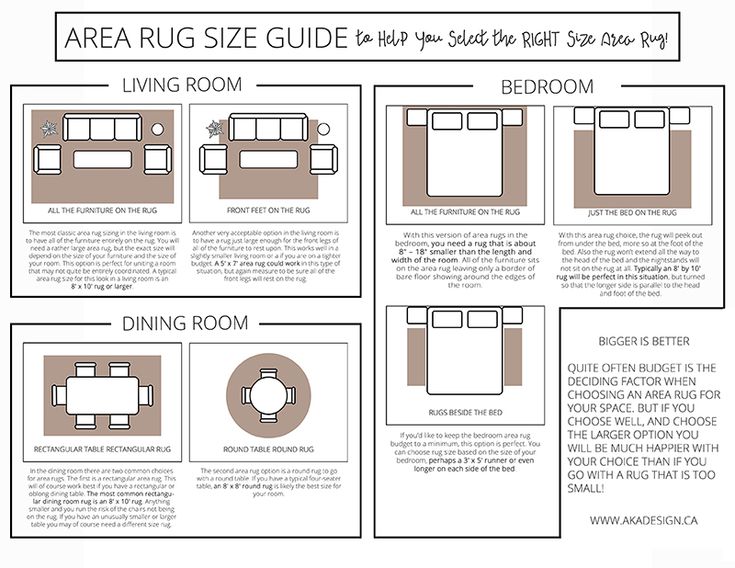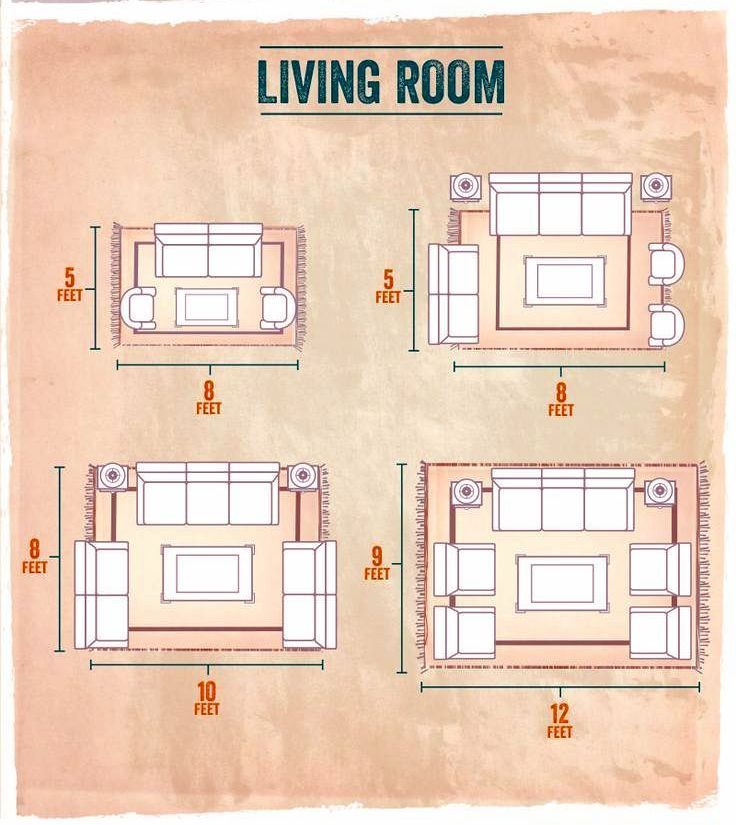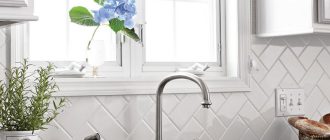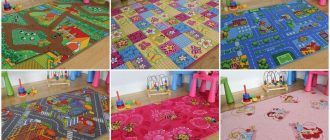
Area Rug Sizing Guide | How to Choose the Right Area Rug
Choosing the right area rug for your space can make a big difference in the overall style and feel of the room. The right rug can tie a space together, add warmth and texture, and serve as a focal point. However, with so many options available, it can be overwhelming to know where to start. That’s why it’s important to consider the size of the area rug before making a purchase.
One of the key factors to consider when choosing an area rug is its size. A rug that is too small can get lost in the space and fail to make the desired impact, while a rug that is too large can overpower the room and make it feel cramped. To ensure you choose the right size rug for your space, it’s important to measure the area accurately.
Before measuring your space, consider the purpose of the rug. Will it be placed under a dining table, in the center of a living room seating arrangement, or in a bedroom? This will help determine the appropriate size and shape. Additionally, consider the furniture arrangement in the room. For example, in a dining room, the rug should be large enough to allow all the chairs to comfortably fit on the rug, even when they are pulled out from the table.
Once you have a clear idea of the purpose and furniture arrangement of the rug, measure the area accurately. A common guideline is to leave a space of about 18 inches between the edge of the rug and the walls or furniture. This will create a border of flooring around the rug, which can help define the space. However, in some cases, you may want to opt for a larger rug that covers more of the floor for a cozier feel.
Key Factors to Consider
When choosing the right area rug for your space, there are several key factors to consider. These factors will help you determine the ideal size and shape of the rug, as well as the materials and patterns that will best suit your needs.
- Room Size: The size of the room where the rug will be placed is an important factor to consider. Measure the dimensions of the room and choose a rug size that allows for at least 18 inches of floor space on all sides.
- Furniture Placement: Consider the placement of furniture in the room and how the rug will fit in with the overall layout. If the rug will be placed under a dining table, make sure it is large enough to accommodate the table and chairs when they are pulled out.
- Functionality: Think about the main purpose of the area rug. Is it meant to provide comfort and warmth in a bedroom? Or is it meant to define a seating area in a living room? The functionality of the rug will help determine the appropriate size and shape.
- Style and Pattern: Consider the existing style and decor of the room. Choose a rug that complements the colors and patterns already present. If the room has a lot of bold colors and patterns, opt for a more neutral rug to balance the space.
- Material: The material of the rug is another important factor to consider. Different materials offer different levels of durability, comfort, and ease of cleaning. Consider your lifestyle and the amount of traffic the area rug will receive when choosing the material.
By considering these key factors, you can choose the right area rug that will enhance the overall look and functionality of your space. Remember to take accurate measurements and consider your specific needs to ensure that you make the best choice for your home.
Room Size
When choosing an area rug for a room, it’s important to consider the size of the room itself. The size of the room will determine the size of the area rug you should select.
Here are some tips for choosing the right size area rug for your room:
- Measure the dimensions of the room and take note of any furniture placement or obstructions.
- Consider the function of the room. If it’s a high-traffic area, you may want to choose a larger area rug to provide more coverage and protection.
- For a dining room, choose a rug that is large enough to fit both the table and chairs when they are pulled out.
- In living rooms, the front legs of all furniture should ideally be on the area rug to create a cohesive look.
- In bedrooms, the area rug can be placed under the bed or in front of it, depending on the size and layout of the room.
- When in doubt, always choose a slightly larger area rug rather than one that is too small for the space.
Remember that the area rug should complement the overall design and style of the room. It should also be proportionate to the size of the furniture and other objects in the room.
By considering the room size and following these tips, you can choose the perfect area rug that will enhance the look and feel of any space.
Layout and Furniture Placement
When it comes to selecting the right area rug for a room, considering the layout and furniture placement is crucial. The size and placement of the area rug can greatly affect the overall look and feel of the space. Here are some tips on how to choose the right area rug size and how to properly place it in your room:
1. Measure your space
First, measure the dimensions of your room to determine the appropriate size for your area rug. Make sure to include any furniture that you want to place on top of the rug in your measurements. This will help you determine the ideal rug size that will provide enough coverage without overwhelming the space.
2. Define a seating area
Identify the main seating area in your room and consider placing the area rug underneath it. This will help to define and anchor the space, making it feel cohesive and inviting. The rug should be large enough to accommodate all the furniture in the seating area, with the front legs of the chairs and sofas resting on the rug.
3. Leave some space
When placing an area rug in a dining room, it’s important to leave enough space around the table for the chairs to be comfortably pulled out. Make sure the rug extends beyond the edges of the table when the chairs are pulled out, but doesn’t extend into other areas of the room. This will ensure that the chairs remain stable on the rug and prevent any tripping hazards.
4. Consider traffic flow
Take into consideration the traffic flow in the room when choosing the placement of your area rug. If there are multiple entrances and exits, make sure the rug is positioned in a way that allows for easy movement without obstructing the doors. Avoid placing the rug in high-traffic areas where it may become wrinkled or worn out quickly.
5. Layering rugs
If you have a large room or an open floor plan, you can consider layering multiple area rugs to create different zones within the space. By layering rugs of different sizes and patterns, you can add visual interest and define separate areas for seating, dining, or other activities.
By considering the layout and furniture placement in your room, you can choose the right area rug size and placement that will enhance the overall design and functionality of your space.
Color and Pattern
When it comes to choosing the color and pattern of your area rug, there are a few factors to consider. The right color and pattern can add visual interest to your space and tie the room together.
Consider the existing colors: Take a look at the colors already present in your room. Choose a rug color that complements or contrasts with the existing color scheme. This will help create a cohesive look.
Size and scale: Consider the size and scale of your room when choosing the color and pattern. If you have a smaller space, a lighter-colored rug can make the room appear larger. In larger rooms, you can use bolder colors and patterns to add visual interest.
Style of the room: Think about the overall style of your room. If you have a modern or minimalist space, you might want to choose a rug with a simple pattern or a solid color. For a more traditional or eclectic room, you can opt for a rug with a more intricate pattern or multiple colors.
Patterns and textures: Consider the patterns and textures already present in your space. If you have a room with a lot of patterns, like wallpaper or upholstery, you may want to choose a rug with a simpler pattern or a solid color to avoid overwhelming the space. On the other hand, if your room is relatively plain, you can use a rug with a more intricate pattern or texture to add visual interest.
Personal preference: Ultimately, color and pattern choice is a matter of personal preference. Think about what colors and patterns you are drawn to and what will make you happy when you walk into the room.
Remember, an area rug is a versatile design element that can be easily changed out if you decide you want a new look. So don’t be afraid to take risks and choose a color and pattern that you love!
Tips for Choosing the Right Size
Choosing the right size area rug may seem like a daunting task, but with a few simple tips, you can find the perfect fit for your space. Here are some helpful tips to consider when selecting an area rug:
- Measure your space: Before you begin shopping for an area rug, it’s important to measure the space where you plan to place the rug. This will give you an idea of the size you need.
- Determine the purpose: Consider how you will be using the area rug. Will it be a focal point in the room or simply a functional piece? This will help you determine the appropriate size.
- Consider the furniture: Take into account the furniture that will be placed on or around the area rug. Be sure to measure the dimensions of the furniture to ensure the rug is large enough to accommodate it.
- Leave some space: It’s important to leave some space around the edges of the area rug. This will create a visual border and help define the space.
- Think about shape: Area rugs come in a variety of shapes, including rectangular, round, and square. Consider the shape of your room and choose a rug shape that complements the space.
- Consider rug placement: Think about where the area rug will be placed in the room. Will it be positioned under a dining table or in the center of a seating area? This will help you determine the appropriate size and shape.
- Balance the room: An area rug can help balance the room and create a cohesive look. Consider the overall size and style of the room when selecting an area rug.
- Try before you buy: If possible, try out different sizes of area rugs in your space before making a final decision. This will give you a better idea of how the rug will look and feel in the room.
By following these tips, you can confidently choose the right size area rug for your space. Remember to consider the measurements, purpose, furniture, and overall balance of the room when making your decision.
Measure the Space
Before you start shopping for an area rug, it’s important to measure the space where you plan to place it. This will help you determine the right size rug for the area and ensure a proper fit. Here are some steps to follow when measuring your space:
- Define the area: Determine the boundaries of the area where you want to place the rug. This could be a living room, dining room, bedroom, or any other space in your home.
- Decide on the placement: Consider the furniture layout and decide where you want the rug to be placed. For example, in a living room, you might want the rug to be centered under the coffee table and extend towards the seating area.
- Measure the length and width: Use a tape measure to measure the length and width of the area where you want the rug to be placed. Make sure to measure from the edges of the furniture if you plan to place the rug underneath it.
- Consider furniture placement: If you plan to place furniture on the rug, make sure to measure the dimensions of the furniture as well. This will help you determine the size of the rug needed to accommodate the furniture.
Once you have the measurements, you can use them as a guide when shopping for an area rug. Keep in mind that it’s generally recommended to choose a rug that is slightly larger than the actual size of the space to create a balanced and visually appealing look.
Consider Furniture Placement
When choosing the right area rug for your space, it’s important to consider the placement of your furniture. The size and shape of your furniture can greatly impact the size and shape of the area rug you should choose.
Here are a few things to consider:
- Dining Room: If you’re placing an area rug in your dining room, it should be large enough to comfortably fit all of your dining chairs, even when they are pulled out from the table. Ideally, the rug should extend at least 2 feet beyond the edges of the table to allow for easy movement of the chairs.
- Living Room: In the living room, you have a few options for furniture placement. You can place all of the legs of your furniture on the rug, or you can choose to have only the front legs on the rug. Either way, the rug should be large enough to create a cohesive and balanced look in the space. If you have a small living room, you may opt for a smaller rug that just fits under the coffee table and the front legs of the furniture.
- Bedroom: In the bedroom, the area rug should be large enough to extend beyond the sides and foot of the bed. You can choose to have the entire bed on the rug, or you can place the rug halfway under the bed, allowing for a larger rug to fill the space.
Keep in mind that these are just general guidelines. It’s important to consider the specific dimensions and layout of your space when choosing the right area rug. We recommend measuring your furniture and the room before making a purchase to ensure the rug fits properly.
Allow for 18-24 Inches of Floor Space
When choosing an area rug for any room, it is important to consider the amount of floor space you have available. Allowing for 18-24 inches of floor space around the edges of the rug creates a balanced and visually pleasing look.
This extra floor space creates a border around the rug, helping to define the area and create a sense of proportion. It also allows for easy movement around the room and prevents the rug from looking cramped or crowded.
For smaller rooms, such as a bedroom or study, a rug with a smaller border of 18 inches may be sufficient. However, in larger rooms such as a living room or dining room, it is recommended to allow for 24 inches of floor space to create a more expansive and grand appearance.
When determining the size of the rug needed for your space, consider the furniture placement as well. Ideally, all the furniture legs should be on the rug, or at least the front legs of larger furniture pieces.
To help you visualize the amount of floor space needed, here is a simple guide:
| 8′ x 10′ | 5′ x 8′ | 18-24 inches |
| 9′ x 12′ | 6′ x 9′ | 18-24 inches |
| 10′ x 14′ | 8′ x 10′ | 18-24 inches |
These are just general recommendations, and you can adjust the size of the rug and the floor space according to your personal preferences and the specific dimensions of your room.
Remember, finding the right rug size and allowing for sufficient floor space can greatly enhance the overall look and feel of your space. It is worth taking the time to measure and consider these factors before making a purchase.
Choosing the Right Style
When it comes to choosing the right style for your area rug, it’s important to consider the overall design and aesthetic of your space. The style of your rug should complement the existing furniture and decor in the room. Here are a few things to keep in mind:
- Traditional: If you have a more formal or traditional decor, you may want to consider a rug with intricate patterns, rich colors, and classic designs. Persian, Oriental, or Aubusson rugs are great options for adding a touch of elegance to your space.
- Contemporary: For a more modern or minimalist look, opt for a rug with clean lines, geometric patterns, and bold colors. Sisal, jute, or woven rugs are popular choices for contemporary spaces.
- Transitional: If your style is a mix of traditional and contemporary, a transitional rug may be the best choice. These rugs often blend classic designs with modern elements, creating a balanced and versatile look.
Remember to consider the colors and patterns of your existing furniture and decor when choosing a rug. A rug should enhance the overall design of your space, rather than clash with it.
Another important factor to consider when choosing the style of your area rug is the function of the room. For example, if you’re decorating a high-traffic area like a living room or hallway, you may want to avoid light-colored rugs that show dirt easily. On the other hand, if you’re decorating a bedroom or home office, you have more flexibility to choose a rug that suits your personal style.
It’s also worth considering the material of the rug when determining the style. Natural materials like wool or cotton can give a softer and more luxurious feel, while synthetic materials like nylon or polyester are often more durable and easier to clean.
| Traditional | Formal or traditional decor | Persian, Oriental, Aubusson |
| Contemporary | Modern or minimalist spaces | Sisal, jute, woven |
| Transitional | Mix of traditional and contemporary styles | Varies |
In the end, the style of your area rug is a personal choice that should reflect your own taste and preferences. Take your time to explore different options and find the rug that best suits your space and lifestyle.
Modern and Contemporary Rugs
Modern and contemporary rugs are an excellent choice for those looking to add a sleek and sophisticated touch to their living spaces. These rugs are known for their clean lines, minimalistic designs, and bold colors. They can instantly transform any area into a modern oasis.
When choosing a modern or contemporary rug, it’s important to consider the size of the area where you plan to place it. The rug should be large enough to cover the main seating area or the focal point of the room. If you have a smaller space, a smaller rug can still make a statement, but be sure to keep the proportions in mind.
Shape: Modern and contemporary rugs come in various shapes, including rectangular, square, round, and even abstract shapes. Consider the shape of your furniture and the overall layout of the space when choosing the shape of your rug.
Color and pattern: Modern and contemporary rugs often feature vibrant colors and bold patterns. This can help add visual interest and create a focal point in the room. However, if you prefer a more subtle look, you can also find modern rugs in neutral tones and minimalist designs.
Material: The material of your modern or contemporary rug will affect its durability and feel. Popular materials for these rugs include wool, synthetic fibers, and natural materials like jute or sisal. Consider the amount of foot traffic in the area and your personal preferences when choosing the material.
Care and maintenance: It’s important to consider the care and maintenance requirements of your modern or contemporary rug. Some rugs may require professional cleaning, while others can be cleaned at home. Be sure to follow the manufacturer’s instructions for care and maintenance to keep your rug looking its best.
In summary, modern and contemporary rugs are a great addition to any space. They can add a touch of elegance and style while providing comfort and warmth underfoot. Consider the size, shape, color, pattern, material, and care requirements when choosing the perfect rug for your area.
Traditional and Oriental Rugs
Traditional and Oriental rugs are a popular choice for adding elegance and warmth to any area. These rugs are known for their intricate patterns and rich colors, which make them a focal point in any space.
Design: Traditional and Oriental rugs often feature detailed patterns and motifs inspired by the art and culture of the regions they originate from. Some common traditional rug designs include floral patterns, geometric shapes, and medallions.
Material: These rugs are typically made from high-quality materials such as wool, silk, or a combination of both. The use of natural materials not only adds durability but also enhances the luxurious feel of the rug.
Size: Traditional and Oriental rugs are available in various sizes to suit different areas. It’s important to measure the area where you want to place the rug and choose a size that complements the space. You can opt for a smaller rug that serves as an accent piece or a larger rug that covers a significant portion of the floor.
Placement: These rugs can be used in various rooms, including living rooms, dining rooms, and bedrooms. In the living room, a traditional or oriental rug can be placed in the center of the seating area, with the furniture arranged around it. In the dining room, the rug should be large enough to accommodate the table and chairs. In the bedroom, a rug can be placed at the foot of the bed or on either side.
Maintenance: Traditional and Oriental rugs require regular maintenance to keep them looking their best. It’s important to vacuum the rug regularly to remove dirt and debris. If there are any spills, they should be cleaned immediately to prevent staining. Professional cleaning is recommended every 1-2 years to keep the rug in optimal condition.
Price: Traditional and Oriental rugs can vary in price depending on factors such as size, material, and design complexity. Handmade rugs are generally more expensive than machine-made ones. It’s important to set a budget and consider the long-term value and durability when making a purchase.
Tips:
- Consider the overall style and color scheme of your space when choosing a traditional or Oriental rug.
- If you have a small room, consider using a lighter-colored rug to create an illusion of space.
- Layering rugs can add visual interest and texture to a room. Consider using a small traditional or Oriental rug on top of a larger neutral rug.
- Use rug pads to prevent slipping and extend the lifespan of your rug.
Overall, traditional and Oriental rugs are a timeless addition to any area. Their intricate designs and quality craftsmanship make them a valuable investment that can enhance the beauty and warmth of your space for years to come.
Transitional and Bohemian Rugs
If you’re looking to add a touch of style and personality to your living space, transitional and bohemian rugs are a great choice. These rugs are known for their unique patterns, vibrant colors, and eclectic designs that can instantly transform any area.
Transitional Rugs:
Transitional rugs are the perfect blend of traditional and contemporary styles. They often feature a mix of classic patterns such as damask or floral motifs, combined with modern color palettes and designs. These rugs can add a sophisticated and stylish touch to any space, whether it’s a living room, dining room, or bedroom.
When choosing a transitional rug, consider the size of the area where it will be placed. Measure the space and select a rug that will fit comfortably within the boundaries of the area. You can choose a large rug that covers most of the floor, or opt for a smaller size that will serve as a focal point in the room.
Bohemian Rugs:
If you’re someone who loves vibrant colors, bold patterns, and a mix of textures, bohemian rugs are the perfect choice. These rugs are known for their free-spirited and eclectic designs that can bring a sense of adventure and whimsy to any space.
Bohemian rugs often feature bold geometric patterns, tribal motifs, and bright, saturated colors such as red, blue, and yellow. They can be made from a variety of materials, including wool, cotton, or synthetic fibers, and can be found in different sizes to fit any area in your home.
When styling a bohemian rug, don’t be afraid to mix and match different patterns and textures. Layering rugs can also create a bohemian-inspired look, adding depth and visual interest to your space.
Whether you choose a transitional or bohemian rug, make sure to properly measure your area and choose a size that fits your space. Remember that a properly sized rug can bring warmth, comfort, and style to any room in your home.
Questions and answers:
What is an area rug?
An area rug is a type of rug that is typically larger than a standard rug and is used to cover a specific area of a room. It can be used to define a space in a room, add warmth and color, and protect the flooring.
How do I choose the right size for an area rug?
When choosing the right size for an area rug, you should consider the dimensions of the room and the furniture layout. Generally, the rug should be large enough to fit all the furniture on it, or at least the front legs of the furniture. It should also leave a border of flooring visible around the edges of the rug.
What size area rug should I choose for a living room?
The size of the area rug for a living room depends on the dimensions of the room and the furniture layout. In a large living room with a seating area, the rug should be large enough to fit all the furniture on it. In a smaller living room, the rug can be smaller and used to define a specific seating area.
Should the area rug match the size of the room?
The area rug does not necessarily need to match the size of the room. It can be smaller or larger, depending on the desired effect. A smaller rug can be used to define a specific area within a larger room, while a larger rug can create a more cohesive and cozy look.



